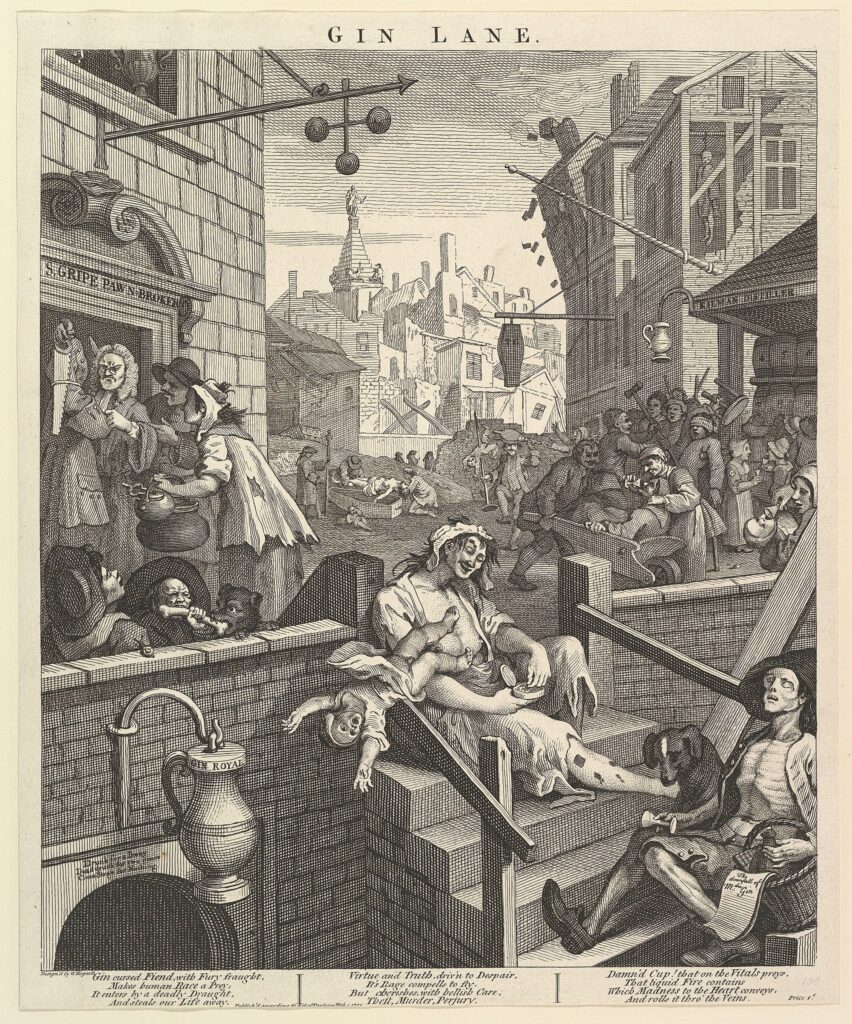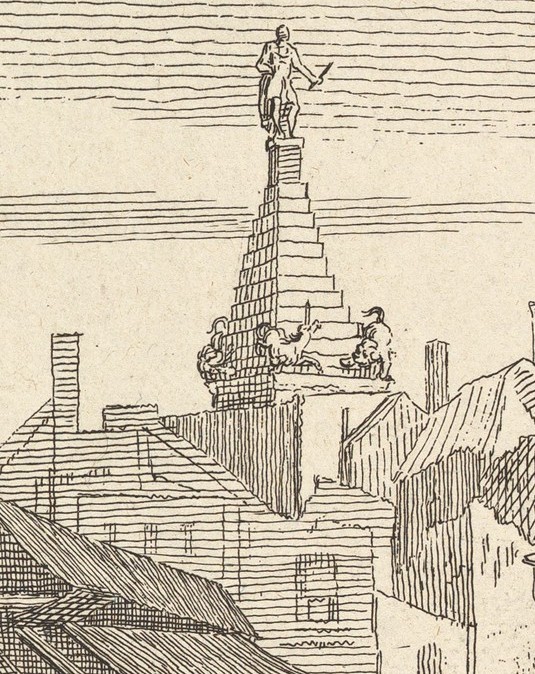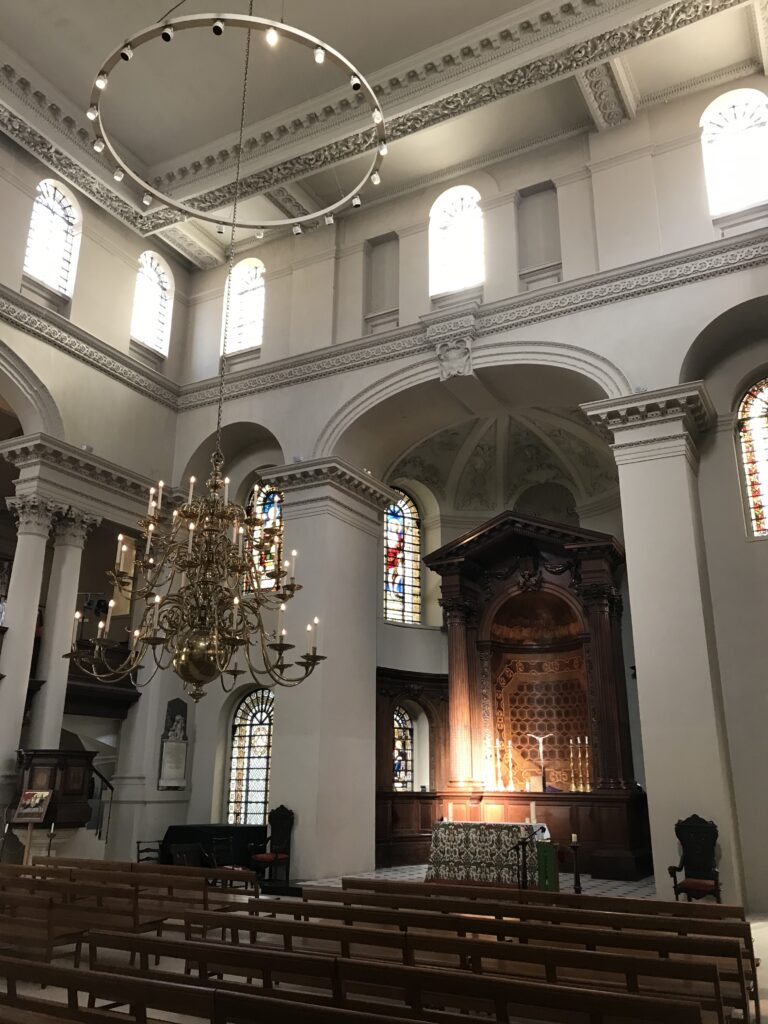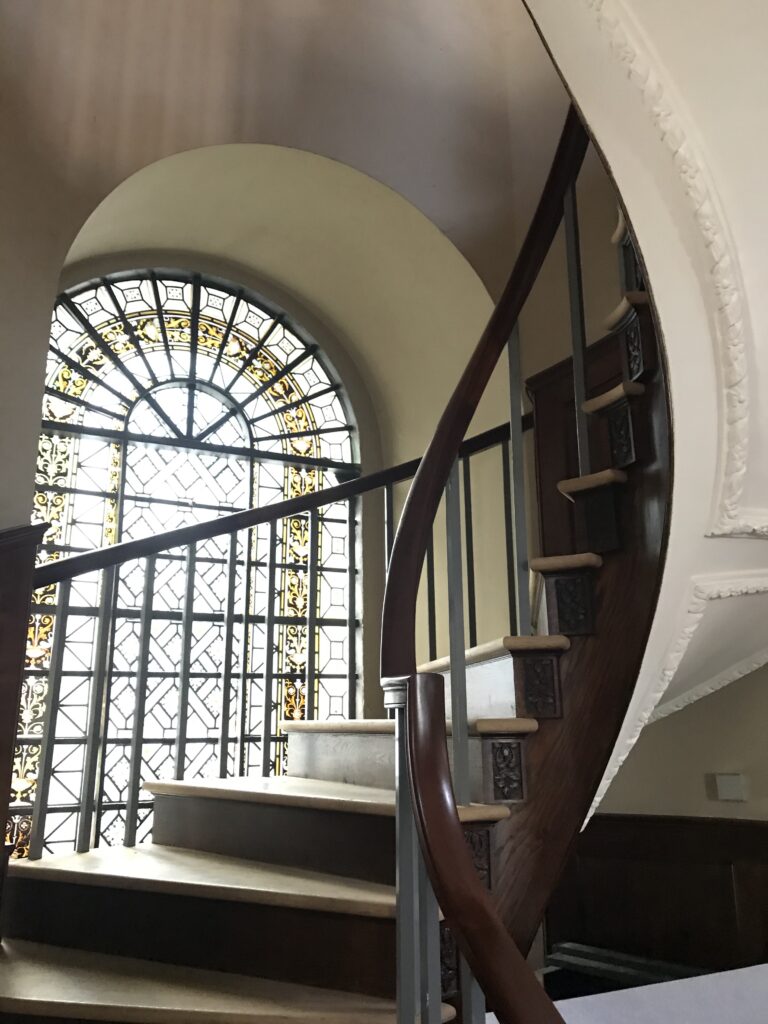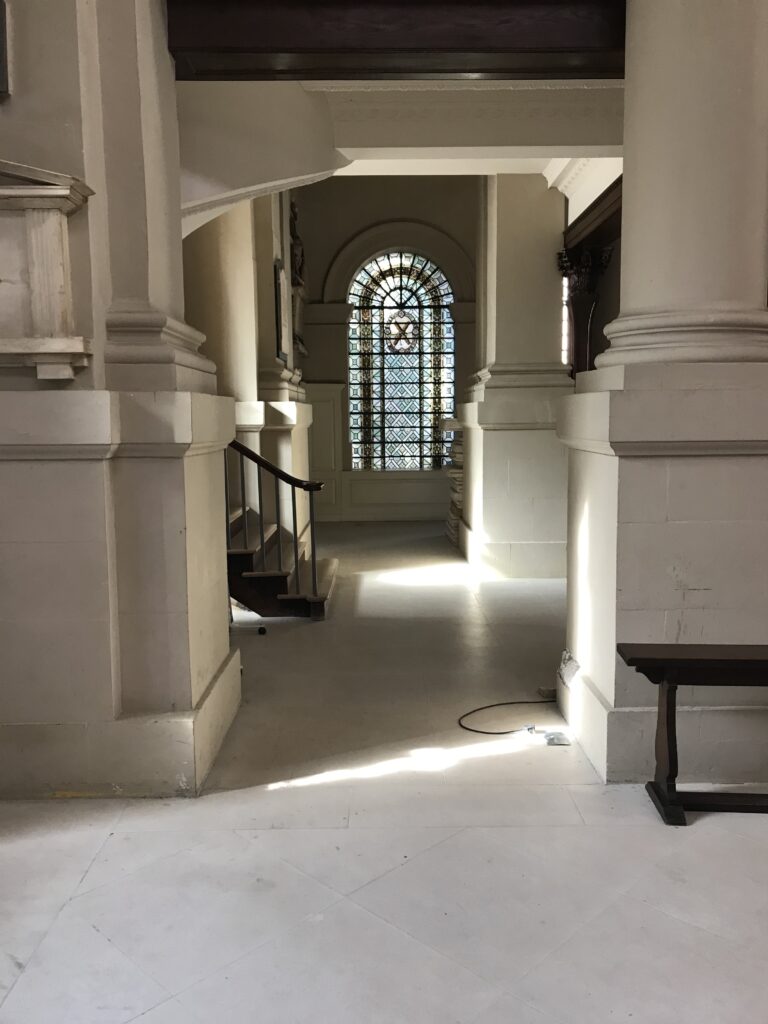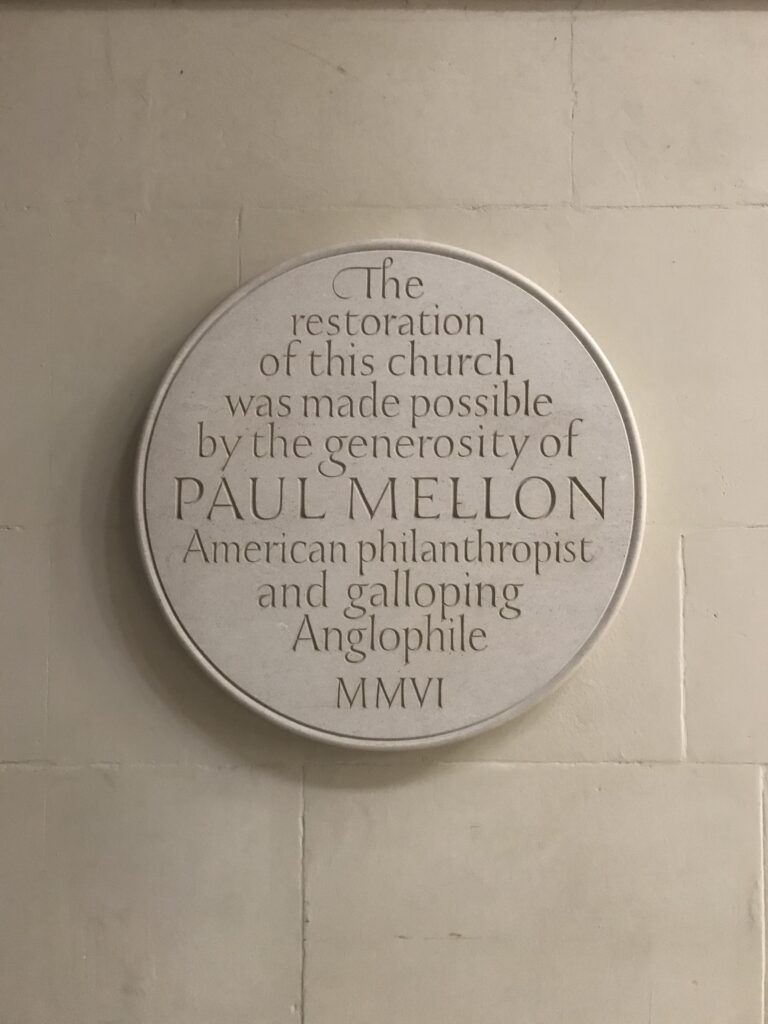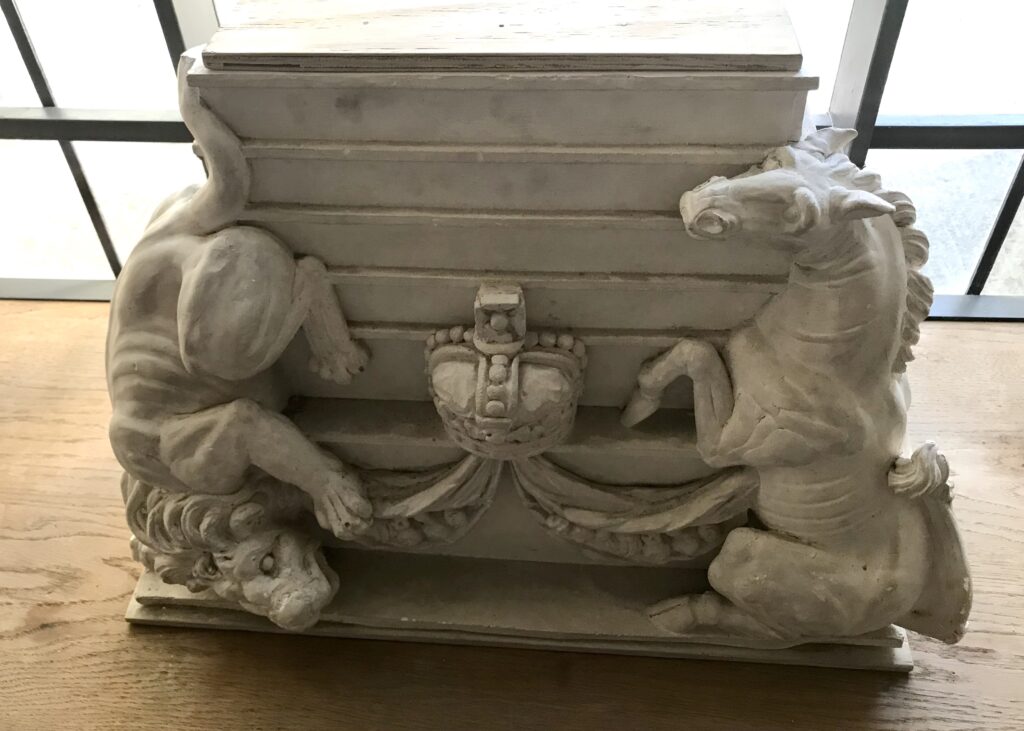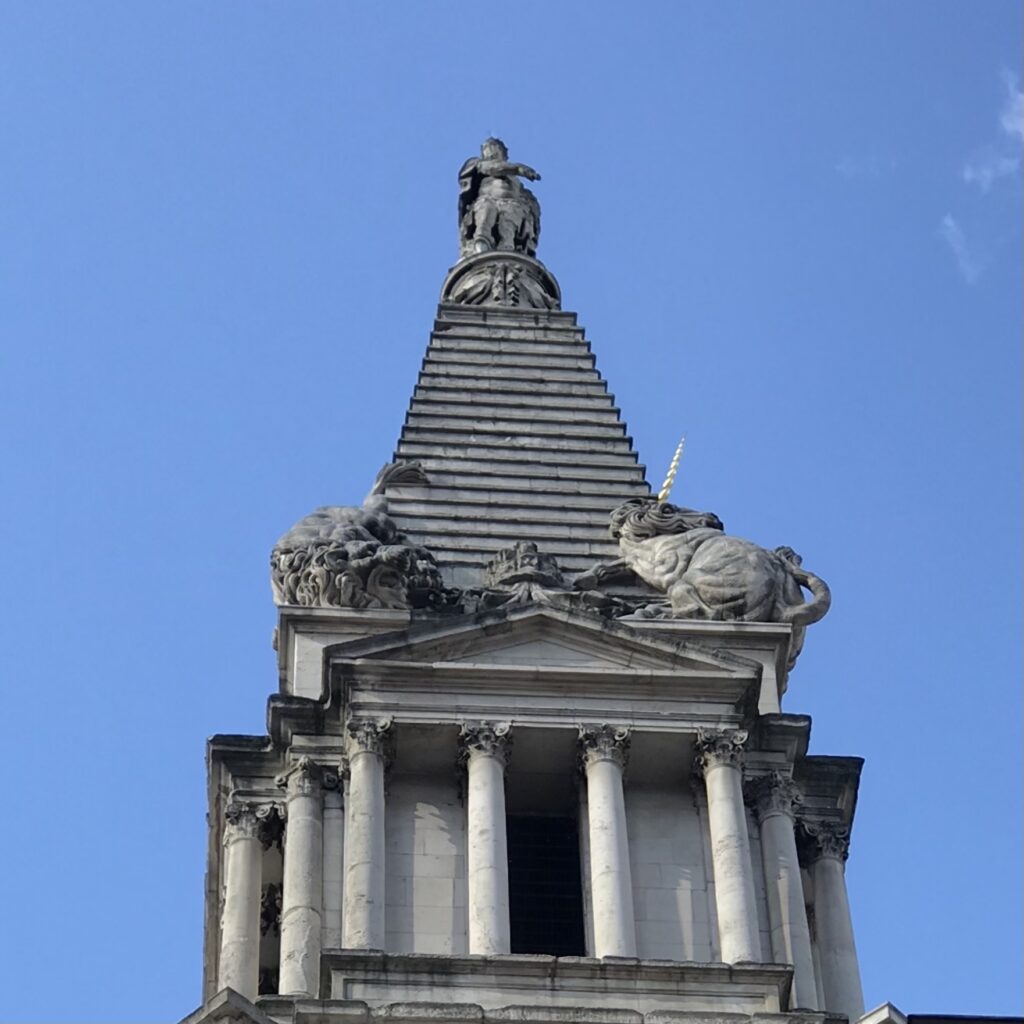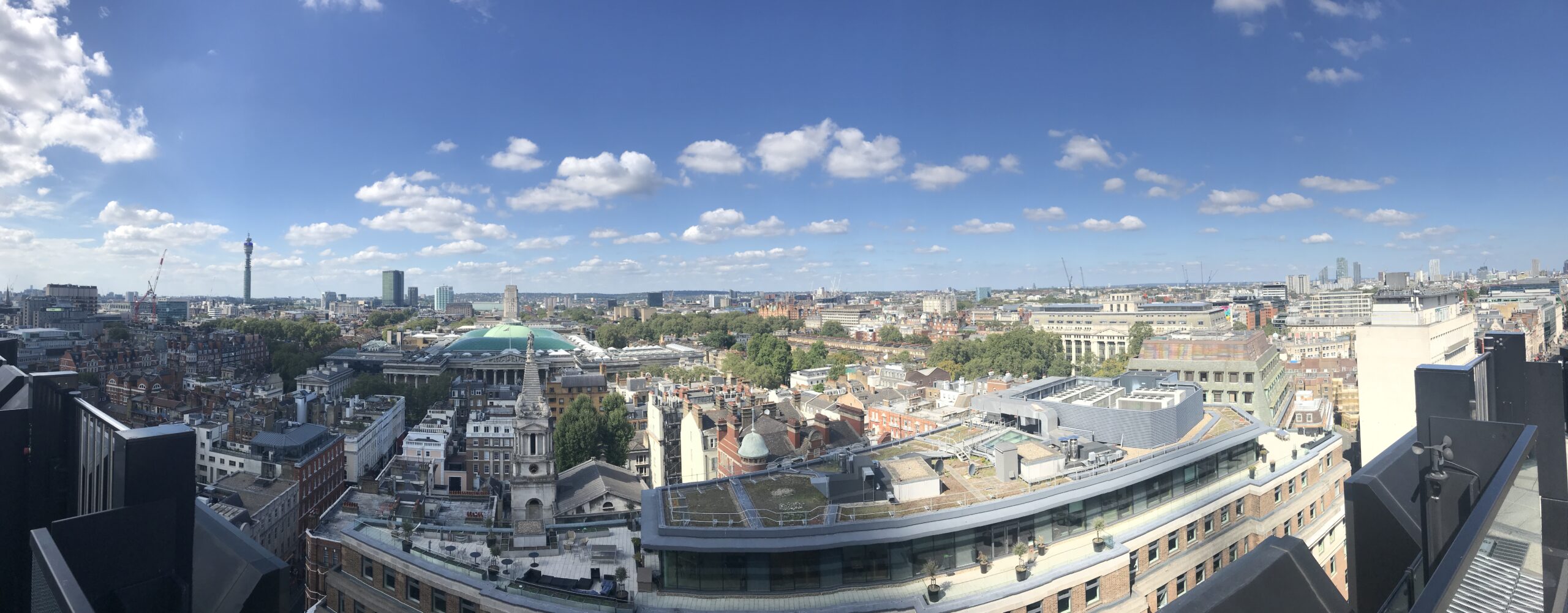
Find your way to the High Holborn entrance to the roof terrace of the new ‘Post Building’ (the former Royal Mail West Central District Office), navigate the security, ascend the lift to the ninth floor and you will be rewarded with a view of the rooftops of the West End.
Over to the east is St Paul’s and the City, south you can make out Parliament and the Eye, but it’s the sights north and close by that really impress.
There is Charles Holden’s Senate House. One block in is the British Museum and the green glass roof of Foster’s Great Court. And then, close enough to almost touch, the weird and wacky spire/tower of Hawksmoor’s St George’s, Bloomsbury, opened in 1731.
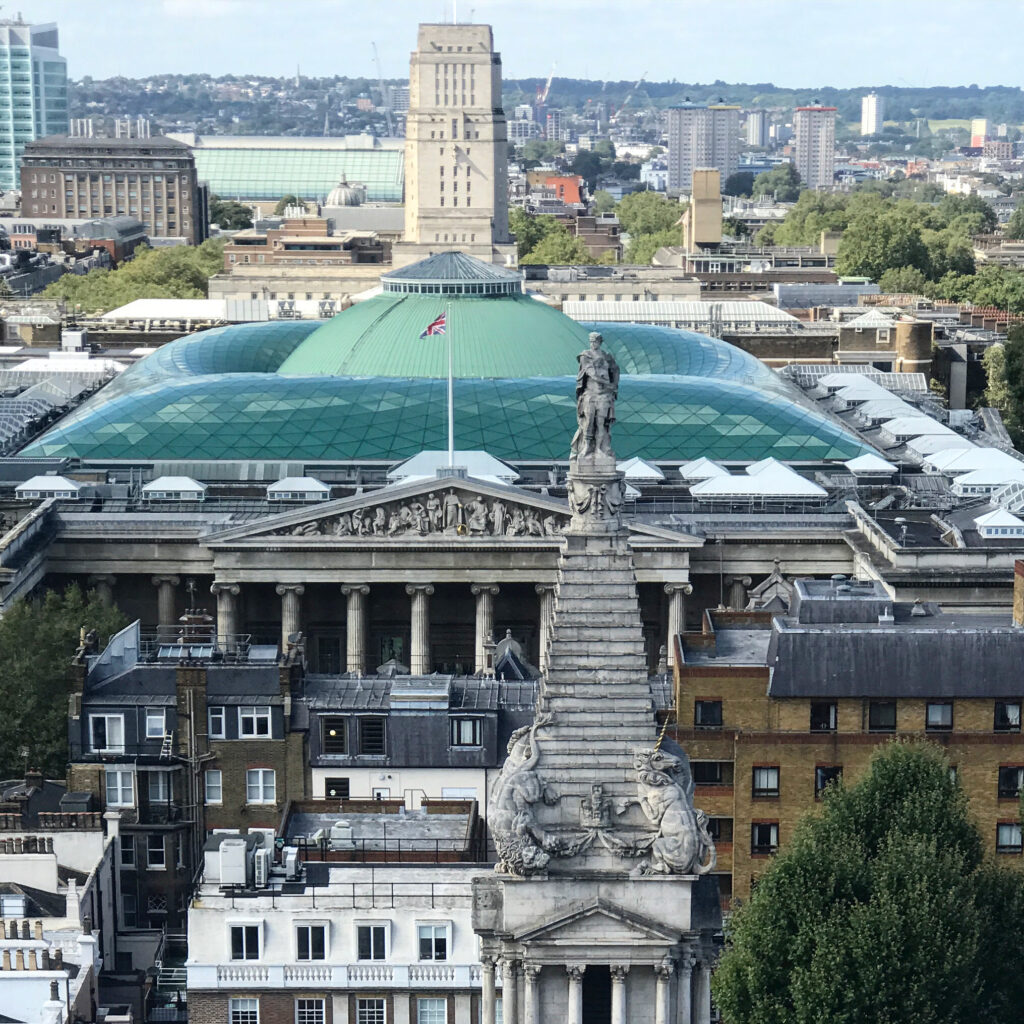
This really is sui generis in terms of church architecture. Based on Pliny the elder’s description of the Mausoleum of Halicarnassus, this is an elongated ziggurat, stepped layers ascending and topped by a statue of… St George? Christ? An angel? No – at the very top is a statue of King George I, Elector of Hanover, successor to Queen Anne and first monarch of our Hanoverian dynasty, dressed as a Roman emperor.
(And just to add an extra bit of spice to the mix, the portico is based on the Temple of Bacchus in Baalbek, Lebanon.)
Inside, things are also a little complicated. For much of its existence the church was aligned north/south rather than the traditional christian east/west. Hawksmoor’s original alignment did have an east/west axis, but in 1781 it was changed to allow for more churchgoers; after the church was comprehensively renovated in 2009 Hawksmoor’s original floorplan was restored.
But perhaps the most significant (and externally obvious) aspect of the restoration was the return of the lions and unicorns around the base of the tower.”The lion and the unicorn were fighting for the crown” ran an early 18th century popular song, referring to the 1715 Jacobite (Stuart and Catholic) rebellion against the Hanoverian/Protestant accession to the crown of the newly united kingdom of England and Scotland. The suppression of this uprising was ongoing as construction work began on the church.
Eagled-eyed art scholars will know that the tower, with cavorting beasts, features in Hogarth’s ‘Gin Lane’, the artist’s blast against the evils of spiritous liquors. That’s because St George’s is close to the parish of St Giles’, a notorious 18th century ‘rookery’ or slum. In fact, St George’s was built so that the more ‘respectable’ residents of the new Bloomsbury squares did not have to venture into the rookery to attend St Giles’ in the Fields church.
The original beasts were removed in 1870 during an earlier restoration of St George’s and the new ones are by the sculptor Tim Crowley. Maquettes of the creatures can be seen in the church.
